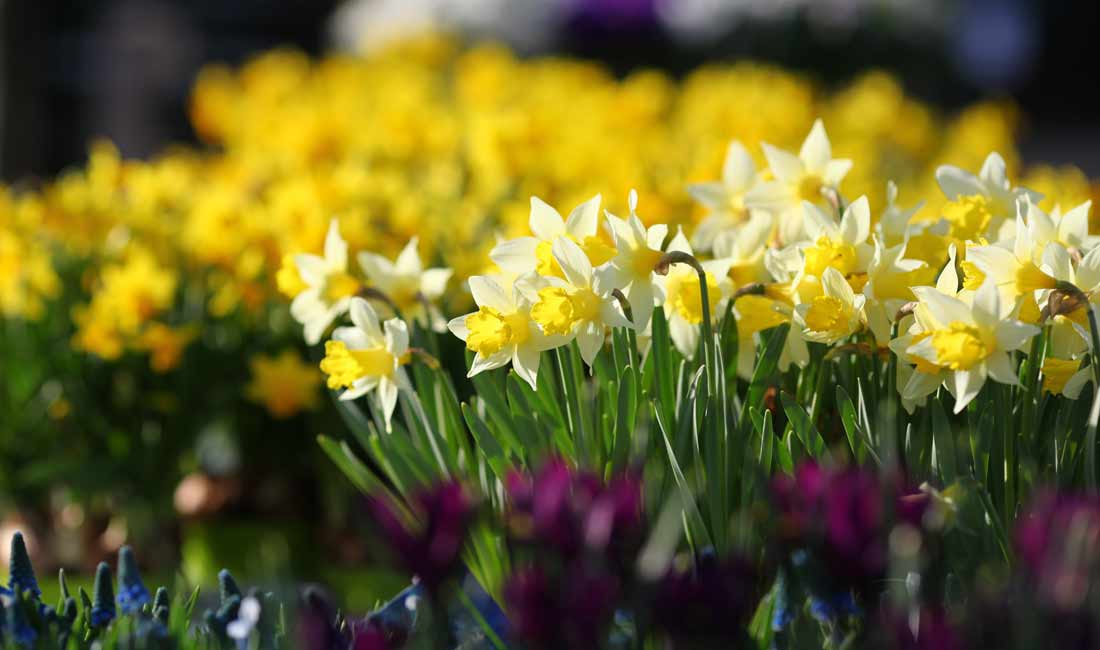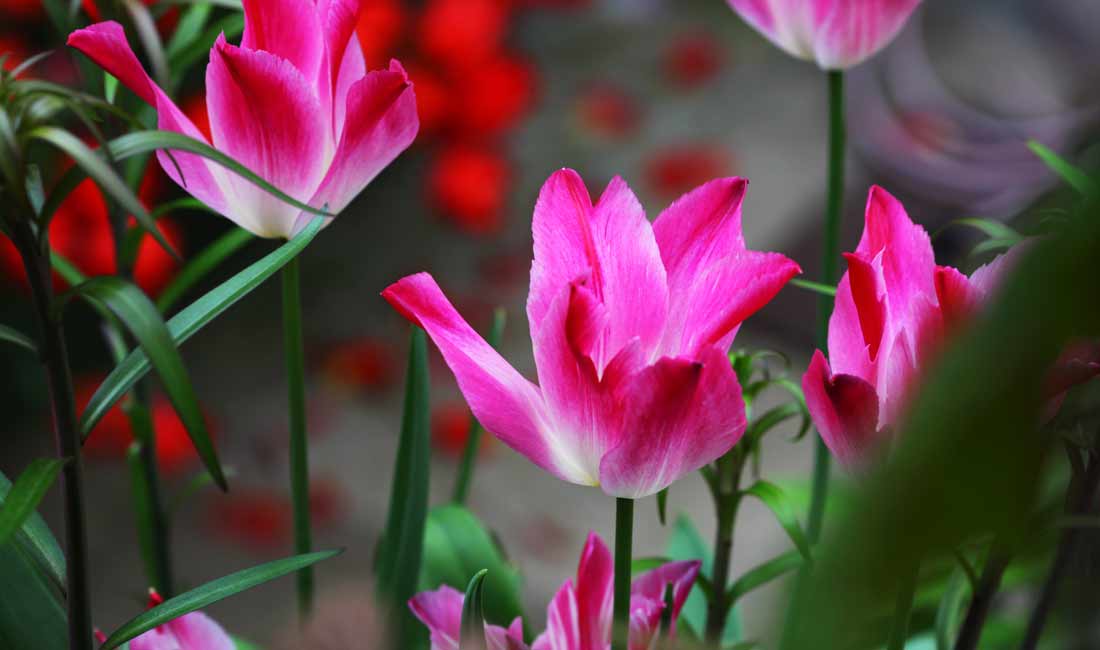
Garden bulbs can be thought of as little nuggets of flower power. Lying dormant for some of the year, when they do come into flower you'll definitely know about it! Bulbs can be separated into two main types; spring and summer.
Spring Bulbs In The Garden
Spring bulbs are generally planted in the autumn and early winter, spend the coldest months of the winter underground, and then emerge and flower in spring. These bulbs need the cold period underground to break their dormancy and reach their full flowering potential. Popular spring bulbs include Daffodils, Iris, Tulips, Hyacinth and Crocus. Spring bulbs are available to purchase as dry bulbs in the autumn and as potted, ready growing bulbs in the late winter and early spring.
Summer Bulbs In The Garden
Summer bulbs are generally planted in the spring and then flower in summer, with some such as Dahlias flowering into the autumn. Other popular summer bulbs include Begonia, Gladiolus, Lilies, Caladiums and Agapanthus. Summer bulbs are sometimes also called 'tender bulbs' as they don't tolerate cold temperatures and should only be planted after the ground warms up and there's no longer a threat of frost. If purchased before planting time, just store them in a cool, dry spot until planting and wait for spring - it will come! Summer bulbs are available to purchase as dry bulbs in late winter/early spring.
Where To Plant Bulbs
Most bulbs need good drainage; we recommend using bulb fibre or multipurpose compost for containers. If you’re planting your bulbs in beds or borders (particularly in dense London clay) it’s often necessary to add compost and/or grit.
The RHS recommend groups of around 5 or 6, and at least 25-30 bulbs to create an impressive display.
How you lay out your bulbs is totally up to you and your personal preferences. You may want to plant them in lines, in circles or in pretty much any design! For a natural planting style, take handfuls of bulbs, throw them down and then plant them wherever they land.

How To Plant Bulbs
Make a hole (use a bulb planter, stick or finger) wide enough for the bulb, and to a depth of approx 3 times the size of the bulb (e.g. 15cm deep for a 5cm bulb)
Leave a space between the holes of about 2 or 3 times the bulb-width in borders and beds, and 1 bulb-width apart in containers
Place bulbs with their pointed ends facing upwards
Replace the soil firmly, but not too much as this can damage the bulbs
Water after planting if the soil or compost is dry
Looking After Bulbs
To help bulbs in containers prepare for next year, feed with tomato food once a week, starting when the shoots appear and stopping when the foliage starts dying back.
Never cut plants back until the flowers and foliage have died back as the bulb gets its energy source from them for next year’s growth and flowers.
Clifton Nurseries Garden Centre
London, W9 2PH
0207 432 1867
Monday – Saturday 9am-5:30pm, Sunday 10.30am-4.30pm
Clifton Nurseries Garden Services
London, W9 2PX
